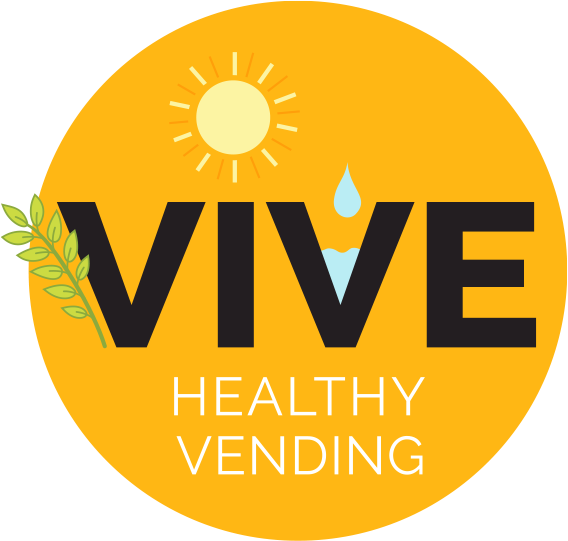The revolution in cashless vending
/Although snacks and drinks vending has evolved with the concern with consuming healthy items, the main categories have remained the same and dominant throughout the decades: snacks and drinks. Payment methods for vending machines, however, have recently undergone a rapid transformation due to advances in technology that customers have been quick to adapt.
When you own a vending machine business, there are several forms of payment you can accept from your customers. Here’s a rundown—from cash to digital wallet—including the amazing advances that cashless vending allows.
Cash
Did you know coins first appeared about 2,700 years ago? They were a mix of gold, silver and copper, and issued by the government in Lydia, about where Turkey is today.
image source: pixabay
Coins are the oldest form of payment used in vending machines, but cashless options are quickly replacing cash as the preferred payment type. Cash still has its place, though, and there will always be customers more comfortable spending bills and coins.
Metal composition of coins remains important today. In vending machines, electromagnets in the coin mechanisms look at metal content and light sensors measure size. These tests determine whether coins put into vending machines are accepted or are ejected into the coin return area. What happens if a government reissues coins with a different metal make-up? No worries—operators can use a programmer to quickly and easily update the software in their coin mechanisms.
Paper currency? Vending machines use ultraviolet light, sometimes along with a reader to measure magnetic composition, to make sure bills inserted are the real deal. These devices also read the bill denomination.
image source: deposit photo
Magnetic Stripe Cards
In Canada, this was originally the type of credit card that required a signature to confirm transactions—vending machines with card readers accepted them for transactions under a certain limit.
Now, however, magnetic stripe cards are commonly used as stored value cards. For example, in a multi-family residence that has vending machines and laundry machines. They’re also used at schools and universities. Student ID cards can be combined with stored value cards. Customers can have additional value added to the cards. Students can use them in snack and drink vending machines throughout the campus, and for other services too.
The move away from physical cash to digitally-tracked cash has resulted in much less theft from vending machines. When thieves target vending machines, they’re usually after the cash in them. If the vending machine doesn’t contain cash, you’ve taken away the incentive.
EMV Chip Cards
EMV chip cards were the next advance, using NFC (near field communication). This refers to a set of communication protocols that allow 2 electronic devices in close proximity (4 cm or so) to communicate. EMV chip cards are inserted into the vending machine’s card reader and the customer punches in their personal identification number (PIN) to approve the transaction. Chip cards are highly secure because of the computer chip in the card and the requirement for a PIN.
image source: deposit photo
Contactless or Tap Cards
Contactless cards also use NFC. In Canada these days, contactless cards are the credit and debit cards used most. Customers can simply tap their card close to a card reader.
Integrated Cards: Chip and Tap
“Integrated” cards have both the chip and the contactless features: they can either be inserted or tapped to make payment. The bank debit card and the credit cards you have in your wallet now are highly likely to be chip and tap cards.
Contactless chip cards marked the beginning of the revolution in cashless vending. They’re easy and convenient to use and they’re highly secure. Canada’s most common forms of cashless payment for small transactions are Interac and debit payments. For the first time, customers could use their debit card to make a vending machine purchase.
image source: deposit photo
Digital Wallets
Customers now can use their smart phone to make a “tap” payment at vending machines. Smart phones use NFC technology and a “digital wallet” to operate the payment apps — like Apple Pay, Google Pay or Samsung Pay.
Summing It Up
When payments are purely digital, they are convenient for everyone:
Deposits are made directly to the owner’s account.
No need for owners to go to machines to do collections.
No need to check that there are enough coins available to make change.
No cash? —no reason for a thief to break in.
Fewer moving parts to break down without a coin mechanism or bill acceptor.
Customers don’t have to have cash.
Customers don’t have to have the right change.
Customers in Canada trust tap payments.
With digital payments, there will never be any nightmare calls about a jammed coin mech or a bill acceptor spitting the bills back out—leaving you wondering about how many potential sales you may have missed.
A tap payment is so fast, easy and convenient. In Canada, it’s quickly become the preferred way to pay. Get vending machines that come equipped with a state-of-the-art card reader, like Vive Premium Healthy Vending Centres.
image source: pixabay




















